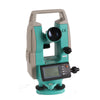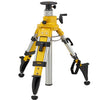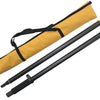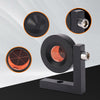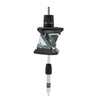What is a Survey Equipment Bipod Used For?
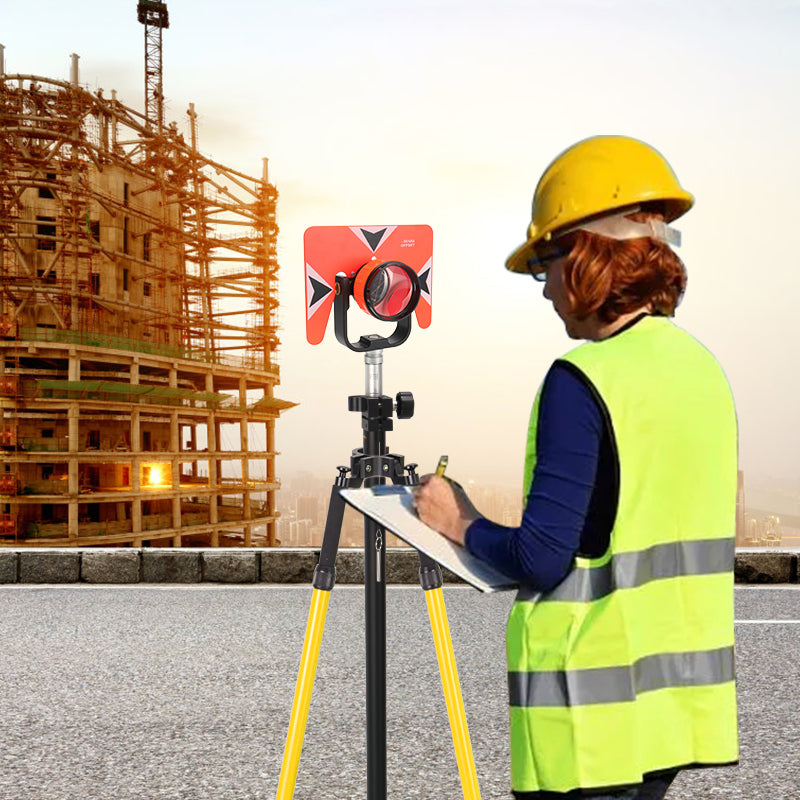
A Survey bipod is an essential tool for surveying professionals who require stability, precision, and efficiency in their work. This piece of equipment is designed to support surveying instruments such as GPS receivers, prisms, and other devices that need to be stabilized at a specific height or position during land measurements.
By providing a stable base, the Survey bipod allows surveyors to achieve accurate readings and maintain consistency throughout their tasks. Its portability and ease of use make it an indispensable tool on the field.

The Advantages and Features of a Survey Bipod
1. Stability and Precision
One of the primary functions of a Survey bipod is to provide stability. Whether you're working on uneven terrain or in windy conditions, the bipod helps to keep your surveying instruments steady, ensuring that you get the most accurate measurements possible. By minimizing vibrations and movement, the Survey bipod enhances the precision of the instrument, which is crucial when working on projects that require exact data, such as construction site measurements, land boundaries, or geodetic surveys.
2. Ease of Setup and Adjustment
The Survey bipod is designed for fast and easy setup. Most models feature adjustable legs that can be extended or retracted quickly, allowing you to set up your equipment at the required height without wasting time. Additionally, the locking mechanisms on the legs ensure that once the bipod is positioned, it will remain securely in place. This ease of adjustment makes the bipod a highly flexible tool, suitable for use in various environments and conditions.
3. Lightweight and Portable Design
While the Survey bipod is built for stability, it is also designed to be lightweight and easy to carry. Made from durable yet lightweight materials such as aluminum, the bipod is highly portable, making it ideal for surveyors who need to move between multiple locations throughout the day. Its collapsible design allows it to fit into a backpack or be easily transported, reducing the overall burden on surveyors who already carry various other tools and instruments.
4. Durability and Reliability
Surveying work often takes place in challenging environments, where equipment must withstand exposure to the elements. A high-quality Survey bipod is constructed from durable materials that resist wear and tear, ensuring that it remains functional even in harsh conditions such as rain, dust, and extreme temperatures. Aluminum bipods, in particular, are corrosion-resistant, making them an excellent choice for outdoor work. This durability ensures that your bipod will serve you reliably for years, providing a solid return on investment.

5. Versatility
The Survey bipod is compatible with a wide range of surveying equipment, from GPS receivers to total stations and prisms. This versatility makes it a key component in any surveyor’s toolkit, as it can be adapted to suit different instruments depending on the task at hand. Whether you’re using it for elevation surveys or horizontal positioning, the bipod offers the flexibility needed to support various surveying operations.
The Unique Features of Survey Bipods and How to Use Them
Survey bipods stand out from other types of supports due to their combination of portability, ease of use, and ability to maintain high levels of precision. Some models come equipped with extra features such as rubber feet for better grip on hard surfaces, or quick-release clamps that allow surveyors to swiftly mount and remove instruments.
To use a Survey bipod, first, extend the legs to the desired height and secure them in place using the locking mechanism. Next, attach your surveying instrument to the top of the bipod, making sure that it is properly balanced. Once everything is securely set up, you can begin your measurements, confident that your instrument will remain steady.

When looking for a Survey bipod for sale:
Material and Build Quality: Opt for bipods made from high-quality materials such as aluminum or carbon fiber, which provide a good balance of durability and lightness. These materials ensure that the bipod can handle tough field conditions while remaining easy to transport.
Adjustability and Height Range: Make sure the bipod you choose offers sufficient height adjustability for your specific tasks. Some bipods have longer legs for higher positioning, while others are more compact for use in confined spaces.
Weight and Portability: Consider the weight of the bipod, especially if you’re going to be transporting it across multiple sites. Lightweight models are easier to carry but should still be sturdy enough to handle your equipment securely.
Locking Mechanism: The reliability of the locking system is critical to ensuring that your surveying instruments stay in place once the bipod is set up. Look for bipods with secure and easy-to-operate locking systems, such as quick clamps or twist locks.
In today’s market, surveyors face the challenge of finding equipment that offers a balance between portability and stability. Many low-quality bipods either lack the necessary durability or are too cumbersome to carry. A well-made Survey bipod solves this pain point by offering both robust support and portability, ensuring that professionals can carry out their tasks efficiently without compromising accuracy or comfort.

Conclusion
In summary, a Survey bipod is a vital tool for professionals who require precision, stability, and ease of use in their surveying tasks. With features such as lightweight construction, quick setup, and compatibility with a variety of instruments, it is an indispensable addition to any surveyor’s kit. By offering high durability and versatility, the Survey bipod ensures reliable performance in even the most demanding conditions.
If you’re looking for a high-quality Survey bipod, don’t hesitate to contact Mountlaser, a trusted manufacturer of surveying equipment. With years of expertise and a reputation for delivering superior products, Mountlaser is your go-to source for durable and reliable surveying tools.

